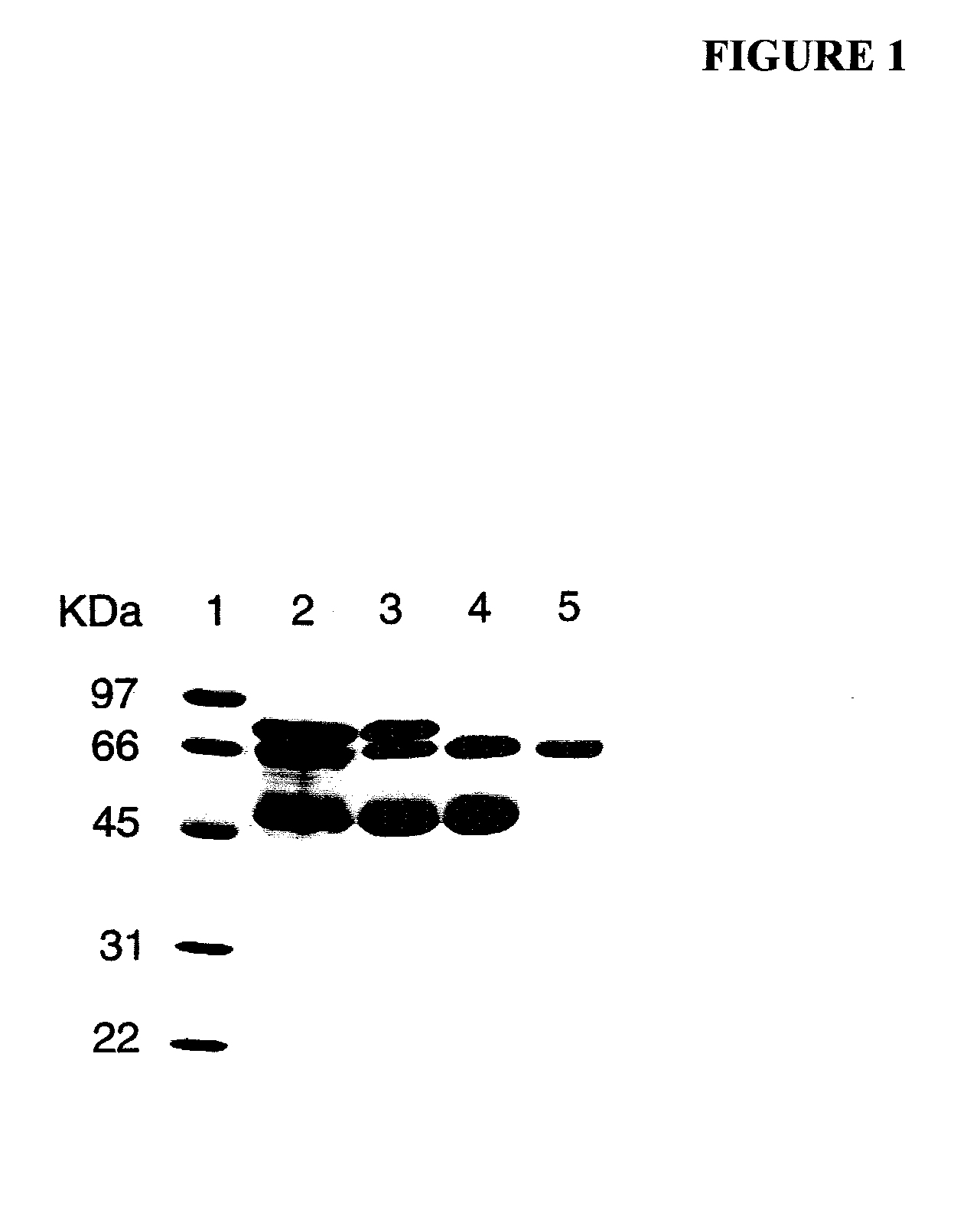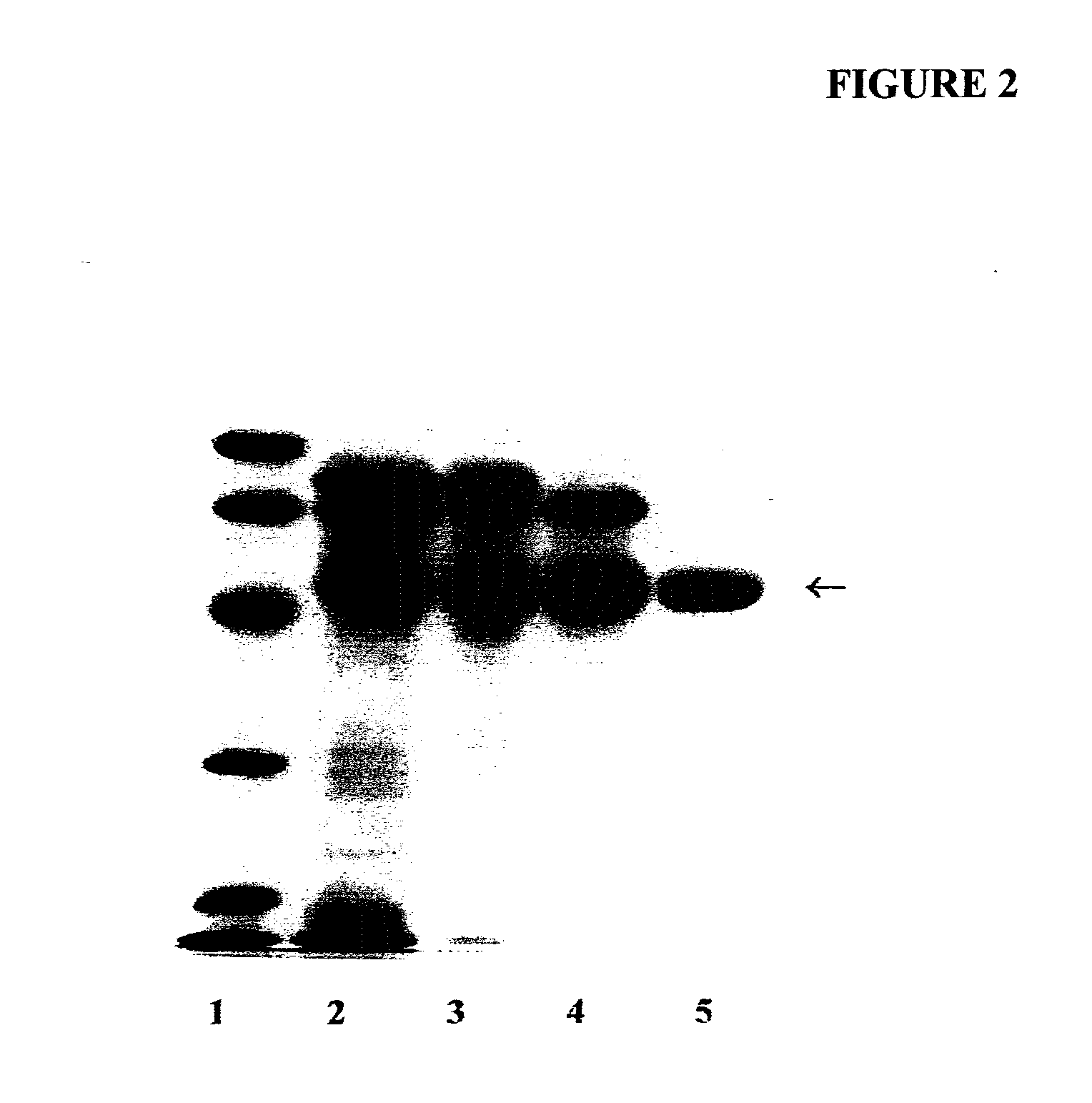Mouse models to study cachexia
a mouse model and tumor technology, applied in the field of mouse tumor models, can solve the problems of reducing the chance of responding to chemotherapy, reducing the chance of body weight loss, and reducing the chance of survival of patients with cachexia, and unable to agree on the nature and relative importance of the inducible factor
- Summary
- Abstract
- Description
- Claims
- Application Information
AI Technical Summary
Benefits of technology
Problems solved by technology
Method used
Image
Examples
example 1
Purification and Spectrophotometric Assay of PALP
[0099]Human PALP (Type XXIV, 1020 units of total activity) in a partially purified form was obtained commercially from Sigma-Aldrich and was prepared by the method of Ghosh and Fishman [Ghosh, N. K. and Fishman, W. H. (1968), “Purification and properties of molecular-weight variants of human placental alkaline phosphatase,”Biochem. J., 108, 779-792]. Briefly, the purification steps described in that paper involve homogenization of human placenta in Tris, extraction with butanol, exposure to heat (55° C.), three successive precipitation of protein with ammonium sulfate followed by re-suspension, fractionation with ethanol twice, and Sephadex-G-200-gel filtration optionally followed by continuous curtain electrophoresis to further separate PALP variants.
[0100]As determined by sodium dodecyl sulfate-polyacrylamide gel electrophoresis (SDS-PAGE) and peptide sequence analysis, the partially purified PALP obtained from Sigma-Aldrich (denote...
example 2
Purification of AT
[0107]A partially purified human placental alkaline phosphatase preparation (PALP) was acquired from Sigma-Aldrich, Inc. AT is a major contaminant of the commercially obtained PALP. AT was first further purified by successive Concanavalin A-Sepharose and Q-Sepharose chromatography as described by Chang et al. for the isolation of PALP [Chang, T.-C., Huang, S.-M., Huang, T.-M. and Chang, G.-G. (1992), “Human placenta alkaline phosphatase: An improved purification procedure and kinetic studies,”Eur. J. Biochem., 209, 241-247]. The Q-Sepharose fraction, which still contained placental alkaline phosphatase in addition to AT, was further purified to homogeneity by t-butyl HIC chromatography [She, Q.-B., Mukherjee, J. J., Crilly, K. S. and Kiss, Z. (2000), “α1-Antitrypsin can increase insulin-induced mitogenesis in various fibroblast and epithelial cell lines,”FEBS Lett., 473, 33-36]. The 5 ml bed volume t-butyl HIC cartridge was connected to a PHARMACIA FPLC system and ...
example 3
Development and Treatment of Tumor Models
[0109]The B16 mouse melanoma and MXT mouse mammary tumors were developed in first generation hybrid BDF1 (C57 B1 female×DBA / 2 male) adult female mice kept at specified pathogen free (SPF) hygienic level. These models were chosen for these experiments because these mice have the complete immune system, and both tumors grow very rapidly. To develop the tumors, B16 and MXT tumor tissue fragments of about 0.1-cm3 were surgically implanted subcutaneously into the intrascapular region to develop the tumors. Each tumor fragment contained about 1-1.5×106 cells. The animals were kept in macrolon cages on ventilated rack at 22-24° C. (50-60% humidity) with lighting regimen of 12 / 12 h light / dark. The animals had free access to tap water and were fed with sterilized standard diet (Charles River VRF1, Germany) ad libitum. The animals were taken care of according to the “Guiding Principle for the care and use of Animals” based upon the Helsinki declaration...
PUM
 Login to View More
Login to View More Abstract
Description
Claims
Application Information
 Login to View More
Login to View More - R&D
- Intellectual Property
- Life Sciences
- Materials
- Tech Scout
- Unparalleled Data Quality
- Higher Quality Content
- 60% Fewer Hallucinations
Browse by: Latest US Patents, China's latest patents, Technical Efficacy Thesaurus, Application Domain, Technology Topic, Popular Technical Reports.
© 2025 PatSnap. All rights reserved.Legal|Privacy policy|Modern Slavery Act Transparency Statement|Sitemap|About US| Contact US: help@patsnap.com


